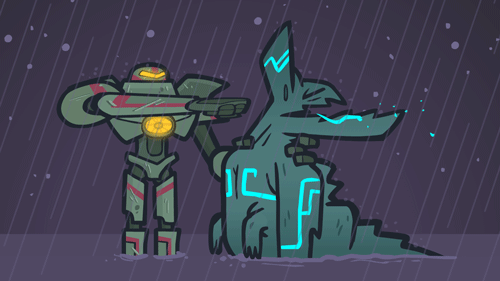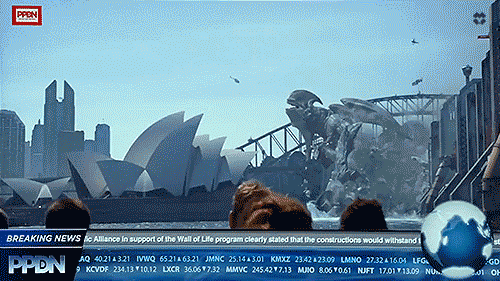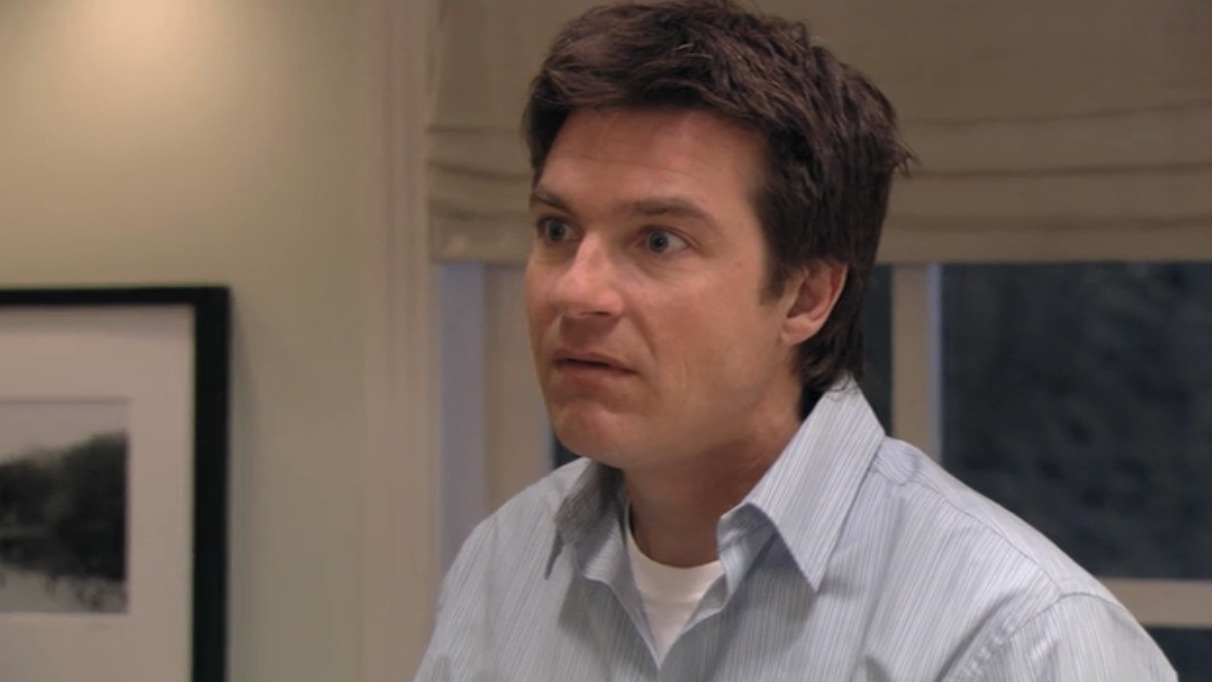 |
| Guillermo del Toro's Pacific Rim (2013) (Source: Tumblr) |
 |
| Mikasa Ackerman, the last Asian on Earth (Source: Deviantart) |
Looking at Shingeki no Kyojin, it’s easy to see where Hollywoodization has been applied. One character, Mikasa Ackerman (left) is the last Asian human alive amongst the surviving population of humanity, playing upon an oft used trope in American cinema. The idea that Mikasa is the last Asian also suggests that the rest of humanity that we see is of Western origin. This implication then, that there is almost exclusively Western characters in a Japanese series, definitely suggests that this series has at the very least been influenced by Western culture, short of being 'Hollywoodized'.
Additionally, large battle sequences and set pieces often occur similar to the calibre of those in the Hollywood blockbuster, resulting in dramatic effects on the storyline; including major character deaths. Similarly, the usual martial art fighting style has been swapped out for a fluid, acrobatic usage of swinging on grappling cables reminiscent of Spiderman. As Klein (2004, p. 361) points out; fight scenes featuring martial arts have become a staple of action films across all genres, it's interesting to see a Japanese story move away from this and incorporate less stereotypical and mainstream styles into the the combat.
The anime’s score also has a notable mixture of Asian and Western influences. Classic Oriental strings can be heard amongst the various rock and electronica styles, and the lyrical tracks are not exclusively sung in English. Overall, the tracks are in fact not dissimilar from Pacific Rim’s soundtrack, the other text I shall be examining in the post.
 |
| Shingeki no Kyojin's 3D Maneuver Gear in action (Source: Tumblr) |
The anime’s score also has a notable mixture of Asian and Western influences. Classic Oriental strings can be heard amongst the various rock and electronica styles, and the lyrical tracks are not exclusively sung in English. Overall, the tracks are in fact not dissimilar from Pacific Rim’s soundtrack, the other text I shall be examining in the post.
Shingeki no Kyojin OST mini-mix (Source: YouTube)
Pacific Rim is a 2013 US film directed by Guillermo del Toro featuring huge robots, known as ‘Jaegers’, controlled by two human pilots,
as the last hope for humanity against the continuing tide of giant monsters, ‘Kaijus’
emerging from the depths of the Pacific Ocean.
 |
| Concept art of the first Kaiju, 'Knifehead' (Source: NY Daily News) |
The movie is heavily inspired by various Japanese films from the
kaiju and mecha genres, like Godzilla (although del Toro has made a point of trying not to reference such films in favour
of creating something original). The designs of both the Kaijus and Jaegers are
drawn from both Western and Asian cultures. For example, the initial Kaiju that
attacks San Francisco in the film is inspired by the original kaiju films from
the 50’s and 60’s that scared the pants off Japanese movie-goers; while the
Jaeger hailing from America, ‘Gipsy Danger’, draws upon elements of the art
deco style of New York architecture. This blending of cultures and styles is
similar to what Rosenbaum (cited in Klein 2004, p. 363) suggests as being
Hollywood’s cultural identity is moving towards multinational as opposed to
national.
The kaiju and mecha films of the Asian film industry are arguably well suited to be treated to the Hollywoodization experience, as they fit Klein's (2004, p. 363) description of a "spectacle driven film" and being designed as a "special-effects-heavy blockbuster" (Klein 2004, p. 363) allows for increased production value, possibly drawing wider audiences in.
 |
| Pacific Rim showing off its blockbuster scale (Source: pacificrim-movie.net) |
Pacific Rim's financial success is intriguing though. In America, it was considered a box office-bomb, earning barely $100 million. However internationally it was a hit, grossing over $300 million; in China alone it grossed $100 million and became the highest grossing Warner Bros. film in China, while also being the sixth highest grossing US film of all time there. What exactly does this kind of data tell us? Perhaps that Americans are not as interested in an 'Asianized' Hollywood blockbuster as Asia is in a 'Hollywoodized' version of Asian genres. It's hard to say for sure based on a single film, but it does suggest that on an multinational level, combining cultures and styles is of interest to most of the world.
It’s obvious that “globalization’s homogenizing and heterogenizing tendencies” (Klein 2004, p. 372), are producing spliced products that are a new genre unto themselves, and we as consumers from both the Asian and Western markets will reap the rewards with amazing cinema and television to come.
 |
| The Kaiju 'Mutavore' attacking Sydney (Source: Tumblr) |
Sources:
Klein, Christina 2004, ‘Martial arts and globalisation of US and Asian film industries’, Comparative America Studies, vol. 2, no. 3, pp. 360-384.









